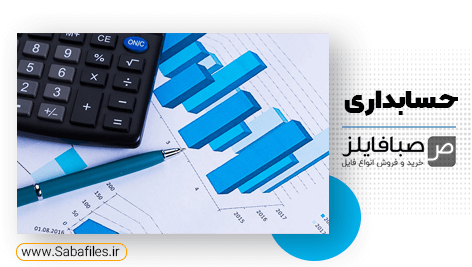ارزیابی عملکرد سازمانها در جهتگیری تصمیمات استراتژیک آتی آنها نقش اساسی دارد و به دلیل اهمیت این موضوع، تحقیق حاضر به آن میپردازد.
چکیده
مسأله اصلی تحقیق: ارزیابی عملکرد سازمانها در جهتگیری تصمیمات استراتژیک آتی آنها نقش اساسی دارد و به دلیل اهمیت این موضوع، تحقیق حاضر به آن میپردازد.
هدف اصلی تحقیق: هدف این تحقیق ارزیابی عملکرد مالی بانکها با استفاده از روشهای غیرپارامتری(تحلیل پوششی دادهها) در بانک کشاورزی استان اردبیل میباشد.
سؤال اصلی تحقیق: تا چه اندازه عملکرد نسبی بانکهای کشاورزی در استان اردبیل را میتوان با استفاده از تکنیک غیرپارامتری تحلیل پوششی دادهها اندازهگیری کرد.
متغیرهای اصلی تحقیق: در این تحقیق نسبته ای مالی و متغیرها برای ارزیابی عملکرد شامل نقدينگي، ساختار دارايي، سودآوري، كفايت سرمايه است.
روش تحقیق: در اين تحقيق از روش تحليل پوششي دادهها، از مدل تركيبيDEA- TOPSIS براي ارزيابي كارايي مالي شعب بانكها و رتبهبندي آنها استفاده شده است. اين روش از دو واحد تصميمگيري مجازي A واحد تصميمگيري و i واحد تصميمگيري، براي تعيين بهترين و بدترين ميزان كارايي نسبي هر واحد تصميمگيري استفاده خواهيم كرد. از دو مقدار به دست آمده براي كارايي، به كمك روش TOPSIS برای ايجاد يك شاخص به نام نزديكي نسبي(RC) به I واحد تصميمگيري استفاده ميكنيم. این تحقیق از نظر هدف یا ماهیت کاربردی است. روش گردآوری دادهها به صورت اسناد کاوی بوده است.
جامعه آماری: حجم جامعه آماری این تحقیق جامعه آماري در اين پژوهش، شامل شعب بانک کشاورزی استان اردبیل است.
روش جمعآوری دادهها: دادههای خام مورد نیاز این تحقیق از طریق مراجعه به گزارشهای مالی شعب بانک کشاورزی اردبیل و از طریق بانکهای اطلاعاتی مربوط به اطلاعات بازار سرمایه استخراج میگردد.
روش تجزیه و تحلیل اطلاعات: روش تجزیه و تحلیل اطلاعات با استفاده از تحلیلهای توصیفی برنامهریزی ریاضی است. اجرای مدلها از طریق نرمافزار LINGO صورت خواهد گرفت.
کلمات کلیدی: نقدينگي، ساختار دارايي، سودآوري، كفايت سرمايه، تحلیل پوششی دادهها
فهرست مطالب
فصل اول: کلیات تحقیق 1
1-1- مقدمه 2
1-2- بیان مسأله 2
1-3- اهمیت و ضرورت تحقیق 3
1-4- چارچوب نظری تحقیق 4
1-4-1- مبانی نظري تحليل پوششي دادهها 4
1-5- فرضیه تحقیق 6
1-6- اهداف تحقيق 6
1-7- تعریف متغیرها 6
1-8- قلمرو تحقیق 7
فصل دوم: مبانی نظری و پیشینه تحقیق 8
2-1- مقدمه 9
2-2- اهداف واحدهای انتفاعی 10
2-2-1- حداکثر نمودن سود 10
2-2-2- حداکثر نمودن ثروت 10
2-3- نقش مدیران مالی در واحدهای انتفاعی 11
2-4- مفهوم عملکرد شرکت 12
2-5- ارزیابی عملکرد 14
2-5-1- اهمیت و ضرورت ارزیابی عملکرد 14
2-6- ارتباط پاسخگویی و اندازهگیری عملکرد 15
2-7- رویکردهای موجود پیرامون معیارهای عملکرد 16
2-8- معیارهای ارزیابی عملکرد مالی 18
2-8-1- معیارهای عملکرد حسابداری 18
2-8-2- معیارهای عملکرد اقتصادی 20
2-9- سود حسابداری 22
2-9-1- اهداف گزارشگری سود حسابداری 23
2-9-2- سودمندی سود 24
2-10- نرخ بازده داراییها 25
2-10-1- محاسبه نرخ بازده داراییها 25
2-10-2- ایرادات وارد بر نرخ بازده داراییها 26
2-11- تئوری ها و مدل ها 27
2-11-1- مدل تحلیل پوششي دادهها 27
2-12- رتبه بندي با استفاده از مدل ابركارايي 27
2-13- پیشینه تحقیق 30
2-13-1- تحقیقات داخلی 30
2-13-2- تحقیقات خارجی 32
فصل سوم: روش تحقیق 42
3-1- مقدمه 43
3-2- روش تحقیق 43
3-3- جامعه آماری 44
3-4- محاسبه حجم نمونه 44
3-5- روش گردآوری اطلاعات 44
3-6- روش تجزیه و تحلیل دادهها 45
فصل چهارم: تجزیه و تحلیل داده ها 46
4-1- مقدمه 47
4-2- نتایج تحلیل پوششی دادهها 47
فصل پنجم: بحث و نتیجه گیری و پیشنهادات 61
5-1- مقدمه 62
5-2- نتایج تحقیق 62
5-3- پیشنهادات بر اساس یافته های تحقیق 67
5-4- پیشنهادات به محققین آتی 67
5-5- محدودیت های تحقیق 68
منابع و مآخذ 69
مقدمه(فصل اول – کلیات تحقیق)
شرکتها دارای منابعی هستند که برای عملکرد مالی قوی و مزیت رقابتی حیاتی هستند. نخستین نوع از این منابع داراییهای مشهود چون اموال، ماشینآلات و تکنولوژیهای فیزیکی دارای جانشین هستند که میتوانند به آسانی در بازارهای آزاد، خرید و فروش شوند. نوع دوم داراییهای نامشهود، باارزش، کمیاب، بدون جانشین و استراتژیکی هستند که برای ایجاد مزیت رقابتی و عملکرد مالی برتر، توانا هستند(نمازی و ابراهیمی، 1390).
از طرفی، توسعه اطلاعات و پیشرفت سریع فناوری در دهه اخیر تحولی عظیم در تمام جنبههای زندگی و فعالیتهای بشر ایجاد کرده و باعث حرکت به سمت اقتصاد دانشمحور و منجر به تغییر پارادایم حاکم بر اقتصاد صنعتی شده است(همتی و همکاران، 1389).
مدیران باید از صورتهاي مالي بانکها و شركتها آگاهي داشته باشند تا بتوانند آينده بانکها و شركتها را پيشبيني و تصميمات آگاهانهاي اتخاذ كنند. پس شناسايي و ارزشگذاري درست و صحيح صورتهاي مالي بانکها و شركتها هم براي مديران و هم براي استفادهكنندگان از صورتهاي مالي امري ضروري ميباشد كه روز به روز بر اهميت آن افزوده ميشود(رحیمیان و همکاران، 1391).
منابع و مآخذ
منابع فارسی
1. بحیرایی، علیرضا؛ حامدی، رضا،(1391)، اندازهگیری کارآیی بانکهای ایران. سومین کنفرانس ریاضیات مالی، شماره 11و 12، صص1-14.
2. خداياري، عباس؛ اميرتاش، عليمحمد؛ مظفري، اميراحمد،(1389) تحقیقی تحت عنوان كاربرد روش تحليل پوششي دادهها براي تعيين بهرهوري و رتبهبندي دانشكده. مديريت ورزشي، – شماره 2، صص 132-117.
3. رستمي، محمدرضا؛ قاسمي، جواد؛ اسكندري، فرزانه،(1391)، تحقیقی با عنوان ارزيابي عملكرد مالي بانكهاي پذيرفته شده در بورس اوراق بهادار. مجله حسابداري مديريت، سال چهارم، شماره هشتم، صص 19-31.
4. ثقفي، علي؛ آقايي، محمدعلي،(1373)، رفتار سود حسابداري، بررسي¬¬هاي حسابداري و حسابرسي. شماره نهم، صص 5-21.
5. سيدنژاد فهيم، رضا؛ آقايي، محمدعلي،(1381)، نقش استقراض در سودآوري شركت¬ها. پایان¬نامه کارشناسی ارشد حسابداری، دانشگاه تربیت مدرس.
6. طوسی، محمد؛ قائمی، سعید، (1385)، بررسی عوامل مؤثر بر بازده سهام عادی شرکتهای پذیرفتهشده در بورس اوراق بهادار تهران. پیام مدیریت، شماره 17 و 18، صص 175-159.
7. مؤتمنی، علیرضا؛ جوادزاده، محمد؛ یزفهم، مهدي،(1390)، ارزیابی عملکرد راهبردي بانکها. مطالعات مدیریت راهبردي، ش 1، صص141-159.
منابع انگلیسی
8. Acquaah, M & Chi, T. (2007). A Longitudinal analysis of the impact of firm resources and industry characteristics on firm – specific profitability. Journal Management Governance 11, 179- 213.
9. Ali Emrouznejad, Abdel Latef Anouze, A note on the modeling the efficiency of top Arab banks, Expert Systems with Applications,36 (2009), 5741–5744.
10. Ballantine, J. W., F. W. Cleveland and C. T. Koeller, (1993), ‘Profitability, Uncertainty, and Firm Size’, Small Business Economics 5, 87–100.
11. Banker، RD.، A. Charnes and W. W. Cooper, (1997), “Some Models for Estimatin Technical Scale Efficiencies in Envelopment Analysis”, Management Science. 30. (9)، pp. 1078-1092
12. Bhagwati, J. N. (1993) India in Transition: Freeing the Economy. Oxford: Oxford University Press. 12-351
13. Bhoothalingam, S. (1993) Reflections on an Era: Memoirs of an Indian Civil Servant. Madras: Affiliated East-West Press.
14. Buzell, R.D. and Gale, B.T. (1987) The PIMS Principles: Linking Strategy to Performance. Free Press, New York.
15. Bernotas, D. (2005). Ownership structure and firm profitability In the Japanese Keiretsu. Journal of Asian Economics 16. PP 533- 554
16. Bokhari, J., C., Hudson, R., Keasey, K. (2005). The Predictive ability and Profitability of technical trading rules: Does company size matter? Economics Letters 86. PP. 21-27.
17. Caloghirou, Y., Protogerou, A., Spanos, Y. (2004). Industry-Versus Firmspecific Effects on Performance: Contrasting SMEs Large-sized Firms,European Management Journal, Vol. 22, No. 2, pp. 231–243.
18. Cinca, C., Molinero, C., Larraz, G. (2005) Country and size effects in financial ratios: AEuropean Perspective. Global Finance Journal 16. PP 26-47
19. Chang, S. and Singh, H. (2000). Corporate and industry unit effects on business unit competitive position. Strategic Management Journal 21, 739–752.
20. Chen, J., Strange, R. (2005). Determinants of Capital Structure: Evidence from Chinese Listed Companies. Economic Change and Restructring 38. PP 11-35
21. Chehab, A. F. (1995). Essays on the determinats of capital structure. University of new Orleans.
22. Claver, E., Molina, J., & Tari, J. (2002). Firm and Industry Effects on Firm Profitability: A Spanish Empirical Analysis, European Management Journal Vol. 20, No. 3, pp. 321–328.
23. Comanor, W. S. and T. A. Wilson (1967). Advertising, Market Structure and Performance. The Review of Economics and Statistics, 49, 423-40.
24. Comanor, W. S. and T. A. Wilson (1979). The Effect of Advertising on Competition: A Survey. Journal of Economic Literature, 42, June, 453-76.
25. Cook W.D. and M. Hababou, 2001, “Sales performance measurement in bank branches”, The International Journal of Management Science, 29, (2001), pp. 299–307.
26. Cubbin, J. and Geroski, P. (1987). The convergence of profits in the long run: inter-firm and inter-industry comparisons. Journal of Industrial Economics 35, 427–442.
27. Davidson III, W. N. and D. Dutia, (1991), ‘Debt, Liquidity and Profitability Problems in Small Firms’, Entrepreneurship Theory and Practice (Fall), 53–64.
28. Dimitrios Angelidis, (2011). Katerina Lyroudi, Efficiency in the Italian Banking Industry: Data Envelopment Analysis and Neural Networks, Journal of European Union Economics and Finance, 2
29. Echevarria, D. P., (1997), Capital Investment and the Profitability of Fortune 500 Industries. Studies in Economics and Finance (Fall), 3–35.
30. Eriotis, N. (2007). How firm characteristics affect Capital structure: an empirical study. Managerial Finance. Vol. 33. No. 5, pp. 321- 331
31. Esther, G. (2006). Targeted advertising strategies on television. Management Science, Vol 52. PP 713-725
32. Ejngton, J. (2000). The secret of survival of firms. Glass International March, April. 24-45
33. Eriksen, B., & Knudsen, T. (2003). Industry and firm level interaction Implications for profitability. Journal of Business Research 56 191– 199.
34. Farrell M. J. (2001), “The measurement of productive efficiency”, Journal of the RoyalStatistical Society، Series A، General, 120, (3), pp. 253–281
35. Feeny, S. (2000). Determinants of profitability: An Empirial Investigation using Australian tax entities, Australia: Melbourne Institute Working, paper No. 1.
36. Geroski, P. A., S. Machin and C. Walters, (1997). Corporate Growth and Profitability. The Journal of Industrial Economics (June), 171–189.
37. Graham, R., Frankenberger, K. (2000). The Contribution of Changes in Advertising Expenditures to Earnings and Market Values, Journal of Business Research 50, 149–155.
38. Han, B. H., & Mannry, D. (2004). The value relevance of R&D and advertising expenditures: Evidence from Korea. The International Journal of Accounting, 39, 155-173.
39. Hansen, G. and Wernefelt, B. (1989) Determinants of firm performance: the relative importance of economic and organizational factors. Strategic Management Journal, 10, 399–411.
40. Hirofumi Fukuyama, Roman Matousek, Efficiency of Turkish banking: Two-stage network system. Variable returns to scale model,Journal of International Financial Markets, Institutions Money, 21 (2011), 75–91.
41. Holmes, S., K. Dunstan and D. Dwyer, 1994, ‘The Cost of Debt for Small Firms: Evidence from Australia’, Journal of Small Business Management (January), 27–35.
42. Hughes, A., 1997, ‘Finance for SMEs: A U.K. Perspective’, Small Business Economics 9, 151–166.
43. Jefferson, G., & Rawski, T. (1994). Enterprises reform in chinese industry. Journal of Economic Perspectives, 8(2), 47-70.
44. Jones, J. C. H., Laudadio, L. and M. Percy (1973). Market Structure and Profitability in Canadian Manufacturing Industry: Some Cross-Section Results. Canadian Journal of Economics, August, 6, 356-68.
45. Komonen, K. (2002). A cost model of industrial maintenance for profitability analysis and benchmarking, Production Economics 79. 82-105
46. Karj alainen, P. (2007). R &D investments: The effects of different financial environments on firm Profitability. Journal of Multinational Finnancical Management. Vol. 33, PP. 435- 438
47. Lee, C. (2002). Advertising, Its Determinants, Determinants, and Market Structure. Review of Industrial Organization 21. PP 89- 101.
48. Lin, S., & Rowe, W. (2005). Determinants of the profitability of China regional SOEs. China Economic Review, 1-22.
49. Lawrence, D., Diewert, W & fox, K. (2006). The contributions of Productivity, Denis. Journal Prod Anal 26: PP1-13
50. Majumdar, S. (1997). The Impact of Size and Age on Firm-Level Performance: Some Evidence from India. Review of Industrial Organization 12: 231–241.
51. Mauri, A.J. and Michaels, P. (1998) Firm and industry effects within strategic management: an empirical examination. Strategic Management Journal 19, 211–219.
52. Mette Asmild, Kent Matthews, (2012),Multi-directional efficiency analysis of efficiency patterns in Chinese banks 1997–, European Journal of Operational Research, 219, , 434–441.
53. Mohamed M. Mostafa, Modeling the efficiency of top Arab banks: A DEA–neural network approach, Expert Systems with Applications,36 (2009), 309–320.
54. McGahan, A. and Porter, M. (1997) How much does industry matter, really? Strategic Management Journal 18, 15–30.
55. Nickell, S. and D. Metcalf (1978), “Monopolistic Industries and Monopoly Profits or, are Kellogg’s Cornflakes Overpriced?,” Economic Journal, June, 88, 254-68.
56. Orr, D. (1974a). The Determinants of Entry: A Study of the Canadian Manufacturing Industries. The Review of Economics and Statistics, 56.1, February, 58-66.
57. Olavarrieta, S. Friedmann, R. (2007). Market orientation, Knowledge related resources and firm performance. Journal of Business Research. Vol. 16, PP. 3 J3- 380
58. Penrose, E. T. (1959) The Theory of the Growth of the Firm. Oxford Basil Blackwell.
59. Raiser, M .(1997). Evaluating Chinese industrial reform. American Economic Review, 84(2), 271-275.
60. Rajan, R,l. & Zingales. (1995). What do we know about capital structure? Some evidence from international data. journal of finance.67-85.
61. Roberta B. Staub, Geraldo da Silva e Souza, Benjamin M. Tabak, Evolution of bank efficiency in Brazil: A DEA approach, European Journal of Operational Research, 202 (2010), 204–213.
62. Rietveld, P., & schipper, Y. (1995). Explaining employmant growth in small industrial enterprises: Dose policy matter?, Vrije university, Tinbergen Institute Amsterdam.
63. Robinson, W. T. and J. Chang (1996). Are Sutton’s Predictions Robust? Empirical Insights Into Advertising, R&D, and Concentration. Journal of Industrial Economics, 44.4, December, 389-408.
64. Roquebert, J.A., Phillips, R.L. and Westfall, P.A. (1996). Markets vs. management: what ‘drives’ profitability? Strategic Management Journal 17, 653–664.
65. Rumelt, R. (1991). How much does industry matter? Strategic Management Journal 12, 167–185.
66. Scherer, F.M. and Ross, D. (1990) Industrial Market Structure and Economic Performance. (3rd ed.). Houghton Mifflin, Boston, MA.
67. Schmalensee, R. (1985). Do markets differ much? American Economic Review 75, 341–351.
68. Shepherd,W. G. (1986). On the Core Concepts of Industrial Economics. Mainstreams in Industrial Organization. 36-52
69. Tellis, G. J. (1988). Advertising Exposure, Loyalty, and Brand Purchase: A Two- StateModel of Choice. Journal of Marketing Research, 25, May, 134-44.
70. Verbeek, A., & Debackere, K. (2006). Patent evolution in relation to public/ Private R&D investment and corporate profitability: Evidence from the United States. Jointly Published by Akademiai Kiado, Budapest and Springer, Dordrecht, Vol. 66, No. 2. 279- 294
71. Wei Fu, T., Chu Ke, M., & Sheng Huang, Y. (2002). Capital Growth, Financing Sourceb and Profitability of Small Businesses: Evidence from Taiwan Small Enterprises, Small Business Economics 18, 257–267.
72. Wernerfelt, B, Montgomery, C. (1988). Tobin’s q and the importance firm performance. Am Econ Rev;78: 246–50. Wernerfelt, B. (1984) A resource-based view of the firm. Strategic Management Journal, 5, 171–180.
73. Wang, h, & Hong W. (2006). Managing customer Profitability in a competitive market by continuous data mining.
- لینک دانلود فایل بلافاصله بعد از پرداخت وجه به نمایش در خواهد آمد.
- همچنین لینک دانلود به ایمیل شما ارسال خواهد شد به همین دلیل ایمیل خود را به دقت وارد نمایید.
- ممکن است ایمیل ارسالی به پوشه اسپم یا Bulk ایمیل شما ارسال شده باشد.
- در صورتی که به هر دلیلی موفق به دانلود فایل مورد نظر نشدید با ما تماس بگیرید.



نقد و بررسیها
هنوز بررسیای ثبت نشده است.